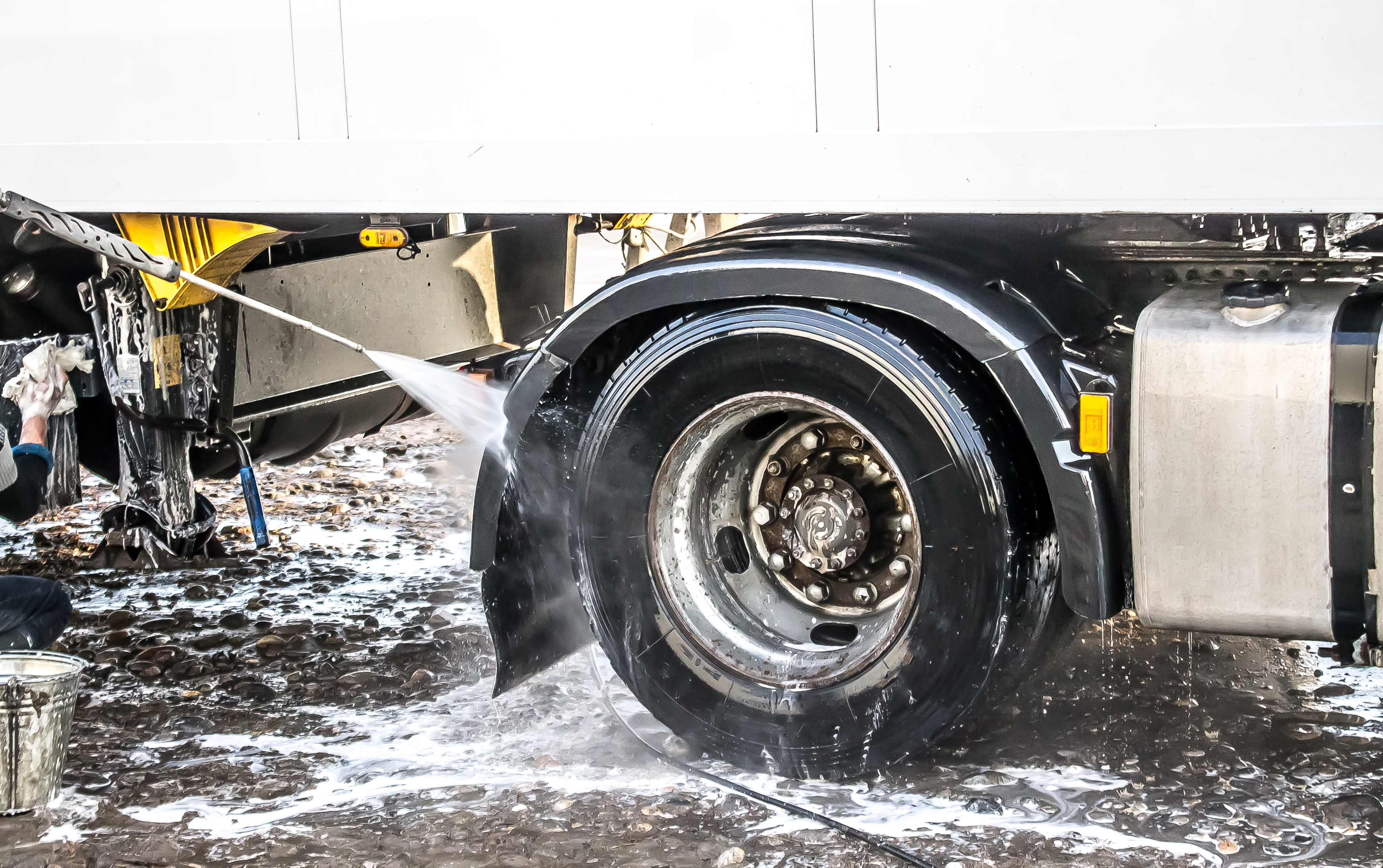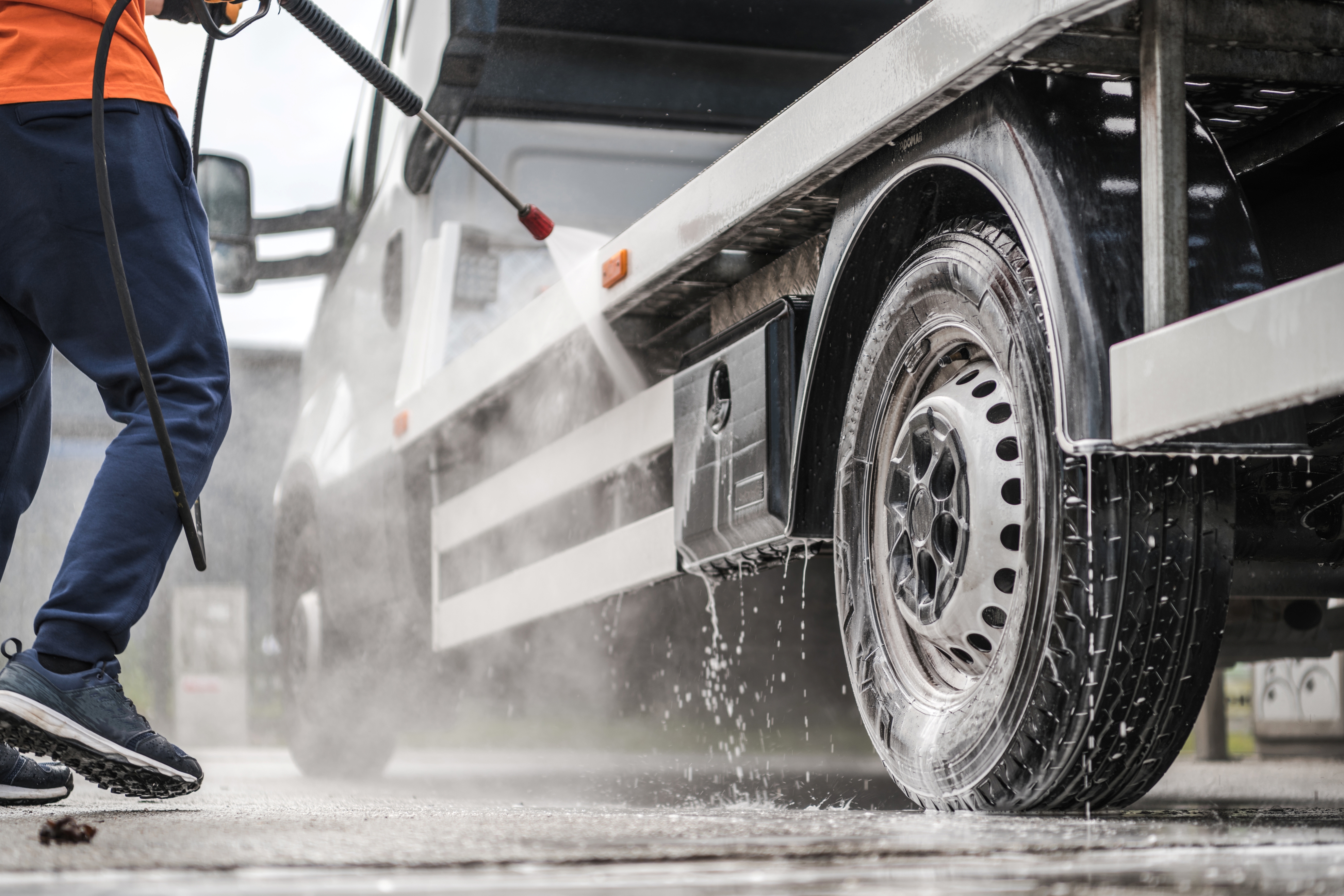
Miranda Blake
Comment trouver une station de lavage de camions près de chez vous
Créée: 23/10/2024
•
Mise à jour : 01/11/2024
Que vous transportiez des marchandises à travers les frontières internationales ou que vous gériez une flotte de poids lourds, le fait de veiller à ce que vos véhicules soient soigneusement nettoyés et bien entretenus peut avoir un impact significatif sur leurs performances, leur longévité et leur efficacité opérationnelle globale. Heureusement, il est facile de trouver un centre de lavage de camions fiable et pratique près de chez vous - lisez la suite pour savoir comment.
Qu'est-ce qu'un lavage de camion ?
Lorsqu'il s'agit de nettoyer des véhicules, les camions ont besoin d'installations et d'équipements spécialisés pour répondre à leurs besoins uniques.
Emplacement et accessibilité
Les stations de lavage pour camions sont stratégiquement placées le long des principales autoroutes et sorties d'autoroute, ce qui en facilite l'accès et perturbe le moins possible la circulation des poids lourds. Cet emplacement permet aux conducteurs de poids lourds de se rendre rapidement et commodément aux services de nettoyage nécessaires, sans avoir à se frayer un chemin dans les rues encombrées de la ville.
Exigences en matière d'équipement et d'installations
Comme les camions nécessitent des machines plus robustes et plus puissantes pour s'attaquer à la saleté, à la crasse et aux débris routiers qui s'accumulent sur leurs surfaces étendues, les services de lavage disposent généralement de baies plus grandes, de dégagements plus importants et d'équipements spéciaux, notamment des nettoyeurs à haute pression et des brosses à longue portée.
Consommation de ressources et coûts
Le lavage d'un camion nécessite généralement plus d'eau et d'électricité en raison de la taille et du volume des véhicules, ainsi que de la nécessité de procédures de nettoyage plus intensives. Cette utilisation accrue des ressources se traduit par des coûts opérationnels plus élevés, qui se répercutent ensuite sur le prix.
Offre de services et spécialisation
Les stations de lavage de camions se concentrent généralement sur un nettoyage extérieur complet, y compris des services spécialisés tels que le dégraissage du moteur et le lavage des bavettes, afin de répondre aux besoins et aux défis uniques liés au maintien de la propreté des véhicules utilitaires lourds.

Naviguer dans le paysage des stations de lavage avec SNAP
Trouver l'installation adaptée à vos besoins peut être une tâche ardue. C'est là que SNAP, fournisseur de services intégrés pour l'industrie du transport routier, intervient pour vous simplifier la tâche.
Réseau étendu de stations de lavage de camions
Notre réseau s'étend sur toute l'Europe, avec plus de 230 sites qui répondent spécifiquement aux besoins des opérateurs de véhicules commerciaux. Ceux-ci sont stratégiquement positionnés le long des principaux axes routiers et centres de transport, ce qui permet aux conducteurs d'accéder facilement aux services de nettoyage nécessaires sans perturber leurs horaires ou leurs itinéraires.
Consultez notre [carte SNAP] (https://snapacc.com/map/) et voyez comment trouver des établissements près de chez vous.
Intégration transparente
SNAP Account s'intègre au réseau de stations de lavage de camions, permettant aux chauffeurs et aux opérateurs de flottes de payer commodément leurs services en utilisant un compte unique et sécurisé. Il n'est donc plus nécessaire d'utiliser de l'argent liquide ou de multiples méthodes de paiement, ce qui simplifie l'expérience de nettoyage et fournit une solution complète pour la gestion des dépenses de la flotte.
Solutions sur mesure pour le lavage des camions
Du nettoyage extérieur à haute pression au lavage spécialisé du châssis et au dégraissage du moteur, les stations de lavage de camions de SNAP disposent de tout l'équipement et de toute l'expertise nécessaires pour offrir une expérience complète et efficace.
Parking du dépôt sécurisé et accessible
En plus de nos services de lavage de camions, nous fournissons également un réseau de sites de stationnement Dépôt sécurisés et accessibles à travers l'Europe. Ces parkings dédiés, exclusifs aux détenteurs d'un compte SNAP, offrent des caractéristiques de sécurité renforcées et la possibilité de pré-réserver des places de parking via intruck, notre application mobile. Les conducteurs ont ainsi l'esprit tranquille, sachant que leurs véhicules sont sûrs et accessibles.
Gestion optimisée de la flotte avec SNAP
En intégrant notre gamme complète de services, les [opérateurs de flotte] (https://snapacc.com/fleet-operators/) peuvent rationaliser leurs opérations et gagner en efficacité. Qu'il s'agisse du lavage transparent des camions, du stationnement sécurisé, de la gestion du carburant ou des paiements au passage de Dartford, nos solutions permettent aux gestionnaires de flottes de se concentrer sur leurs principaux objectifs commerciaux tout en tirant parti de la puissance de la technologie pour optimiser leurs processus.
Améliorez les performances de votre flotte avec SNAP
Le maintien de la propreté et du bien-être de vos véhicules commerciaux est un aspect essentiel de l'excellence opérationnelle. En tirant parti du vaste réseau d'installations spécialisées de SNAP, vous pouvez améliorer les performances et la longévité de votre flotte, tout en simplifiant la gestion globale de vos opérations de transport.
Nos services intégrés offrent une solution complète qui répond aux besoins uniques de l'industrie des véhicules commerciaux. Nous vous permettons de vous concentrer sur ce qui compte le plus - livrer votre cargaison de manière sûre et efficace, tout en minimisant les tracas et en maximisant la rentabilité de l'entreprise.
Alors que vous êtes sur la route, laissez SNAP être votre partenaire de confiance pour préserver l'état impeccable de vos véhicules. [Inscrivez-vous gratuitement dès aujourd'hui] (https://snapacc.com/sign-up/)



